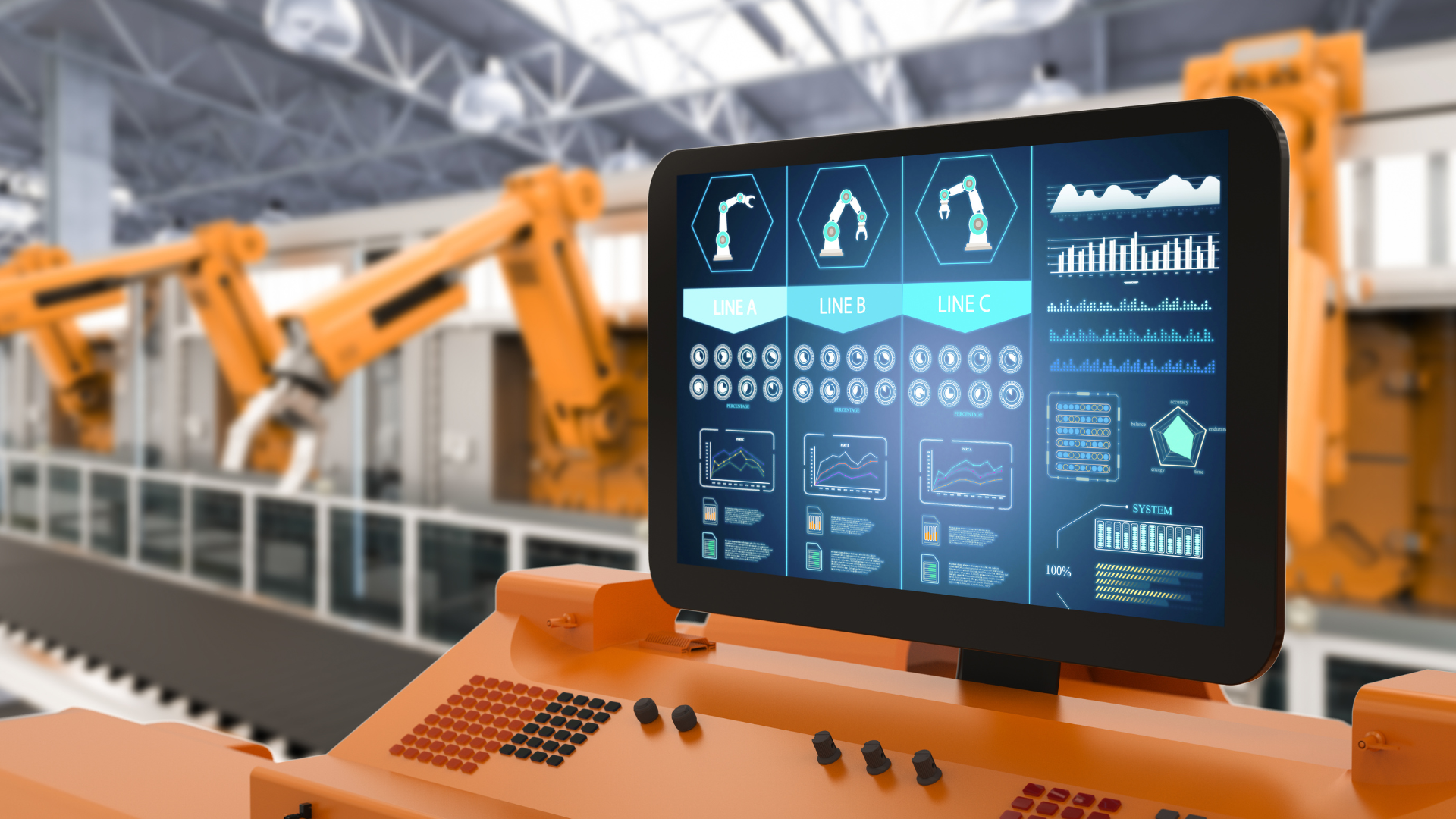Benefits of Digitizing Factory Floor Paper and Remote Monitoring
1. Productivity
By fully digitizing the manufacturing operation, there will be a significant reduction in form filling and manual tracking. This will create more opportunities for operators and technicians to efficiently operate their equipment. The captured data from machines, people, and systems is then analyzed in the cloud for better insights. Operators and managers have real-time access to production conditions and machine performance data.
Operators can now utilize intuitive dashboards and visualization tools, including Pareto charts and customized reporting. These tools provide access to digital data and analysis that was previously only available through manual paper records. This enables operators to make informed decisions based on accurate information. By eliminating the need for paper, a direct connection is established between staff and machines, resulting in increased productivity.
Managers and technicians can significantly boost their productivity by going paperless. With the ability to access real-time machine data by job, hour, operator, or globally, they can make quick and informed decisions. In the past, decision-making was delayed due to the time-consuming process of collecting and analyzing paper-based reports. But now, thanks to digital data capture, managers can make real-time decisions based on current information.
2. Data Accuracy
Mistakes are common among people. In complex manufacturing environments, categorizing data on paper systems often leads to mis categorization of many data points due to operator bias. To combat this issue, paperless manufacturing software relies on capturing data directly at the machine level.
You can eliminate the need for manual data logging and paper printing by capturing the run state of equipment at the source of data generation. The digitization of manufacturing collects, organizes, and contextualizes data at the machine end, effectively eliminating errors. Data can be captured through various methods and conveniently stored in the cloud for easy accessibility.
You can install sensors and measurement devices on other equipment at the edge to capture data efficiently. This data can then be sent via a cellular connection for further analysis and use. Legacy equipment can be upgraded with devices that capture frequency variations. This enables the analysis of information for better understanding. By using these data capture methods, we eliminate errors caused by human error or bias in paper-based systems
3. More Effective Continuous Improvement Programs
Continuous improvement programs are an effective way for managers and team members to address trouble areas on the floor in real-time as they occur. Digital data capture has replaced paper-based systems, enabling the identification of equipment utilization issues, highlighting training deficiencies, and thoroughly vetting procedures with accurate information.
Manufacturers who want to go paperless can benefit from using manufacturing software to monitor production. This technology has the potential to decrease or even eliminate the need for paper, as well as streamline shop methods and standard operating procedures. Eliminating paper collection and analysis lag allows for more time to be dedicated to value-added process activity, resulting in a leaner and more efficient process.
4. Operating in Real-time
5. Cost Savings
Certainly, transitioning to a paperless system offers numerous benefits for businesses. Not only does it eliminate the expenses associated with paper, storage, and handling, but it also frees up funds that can be utilized to enhance cash flow. However, the cost savings extend far beyond these initial factors. By implementing digitization and analytics, businesses can achieve higher productivity, real-time operation, and improved process optimization. This directly reduces costs in areas unrelated to paper, leading to a positive impact on the bottom line.
Functional areas such as schedules, BOMs, and inventory management can operate more efficiently and confidently due to the high-quality data available. Decisions are made promptly without being dependent on printed reports that need to go through the production chain. Being able to take action on insights immediately is crucial. It saves time, prevents quality issues, resolves compliance and engineering problems quickly, and eliminates the need for costly wait times or production of replacements.
6. Faster Approval and Compliance
Finished goods in discrete manufacturing are exclusively produced for medical, aerospace, and defense projects. The use of digitization necessitates an intricate approval process to verify documents and guarantee their production meets strict specifications. Automating the approval process will significantly reduce time, improve the accuracy of required approvals, and increase the first pass quality yield.
Engineering changes used to cause disruptions in the workflow due to paper drawings and job tickets. If there were errors or necessary changes, operators had to stop work until the issue was resolved. If the change did not reach the shop floor in time, then the necessary part will have to be remade.
Compliance can be easily automated with the help of advanced data capture and analytics. High-value parts requiring various approval levels can also undergo rigorous compliance validation. Digitization eliminates the need for time-consuming approval processes associated with paper systems. By automating compliance, including engineering changes, the use of paper is no longer necessary.
7. Improved Collaboration
Paper-based systems have always had limited communication capabilities due to the slow processing of paper. As a result, communication was predominantly carried out through paper channels.
Automating these processes electronically enables seamless collaboration across various departments including manufacturing, engineering, compliance, scheduling, inventory control, and management. The collected data consolidates information from different sources to provide a single source of truth.
Greater transparency is created, resulting in improved communication and collaboration across the entire enterprise. All team members have access to up-to-date information, instantly updating their tasks throughout the system. Operations can maintain their flexibility and efficiency as there is no need to wait for a signed document to proceed.
Eliminating the use of paper on the factory floor brings numerous benefits and streamlines operations. By transitioning to digital documentation, companies can improve efficiency, reduce errors, and enhance overall productivity.
Gone are the days of searching through stacks of paper for important documents or instructions. With a digital system in place, workers can easily access and retrieve information with just a few clicks. This eliminates time wasted on manual searching and allows employees to focus more on their tasks at hand.
Furthermore, going paperless reduces the risk of errors caused by illegible handwriting or misplaced documents. Digital records are clear and easily readable, ensuring that crucial information is accurately communicated throughout the production process. This not only saves time but also minimizes costly mistakes that can impact product quality or customer satisfaction.
In addition to efficiency gains, eliminating paper on the factory floor has significant environmental benefits. By reducing reliance on paper-based systems, companies contribute to a greener future by saving trees and reducing waste.
In conclusion, embracing digital documentation offers undeniable advantages for manufacturing facilities. From increased efficiency to reduced errors and environmental sustainability, eliminating writing on paper is a logical step forward for any modern factory floor.





